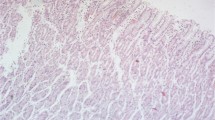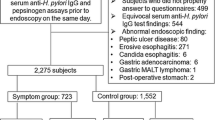Abstract
Recurrent abdominal pain (RAP) is a significant problem in the pediatric population, and there has been much recent interest in the role that Helicobacter pylori (Hp) might play in this disorder. In this case control study, the authors aimed to determine whether Hp is an agent responsible for RAP, and to assess fasting gastrin concentrations in children with and without RAP in the Hp-positive and -negative groups. The study was conducted in 42 patients with RAP and 50 healthy children attending routine day-case surgery as a control group, aged 3 to 15 years, over a 12-month period. Of the 42 children with RAP, 30 were seropositive (71.4%) for Hp IgG, and of 50 children in the control group, 32 were seropositive (64%) for Hp IgG (P > 0.05). We found that Hp infection was as high in healthy children as in children with RAP. The mean fasting gastrin levels in 62 Hp-seropositive children (60.4 ng/l) were not different from those in 30 Hp-seronegative children (57.3 ng/l) and those in 42 children with RAP (58.2 ng/l) were also not significantly different from those in 50 healthy children (62.9 ng/l). Thus, no association between childhood Hp infection, hypergastrinemia, and RAP was found in our Turkish population.
Similar content being viewed by others
Author information
Authors and Affiliations
Additional information
Accepted: 26 May 1998
Rights and permissions
About this article
Cite this article
Günel, E., Fındık, D., Çağlayan, O. et al. Helicobacter pylori and hypergastrinemia in children with recurrent abdominal pain. Pediatr Surg Int 14, 40–42 (1998). https://doi.org/10.1007/s003830050431
Issue Date:
DOI: https://doi.org/10.1007/s003830050431




